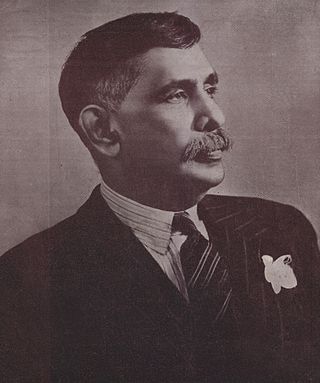
Don Stephen Senanayake was a Ceylonese statesman. He was the first Prime Minister of Ceylon having emerged as the leader of the Sri Lankan independence movement that led to the establishment of self-rule in Ceylon. He is considered as the "Father of the Nation".

Mahāvaṃsa is the meticulously kept historical chronicle of Sri Lanka until the period of Mahasena of Anuradhapura. It was written in the style of an epic poem written in the Pali language. It relates the history of Sri Lanka from its legendary beginnings up to the reign of Mahasena of Anuradhapura covering the period between the arrival of Prince Vijaya from India in 543 BCE to his reign and later updated by different writers. It was first composed by a Buddhist monk named Mahanama at the Mahavihara temple in Anuradhapura in the 5th or 6th-century CE.
Deshamanya is the second-highest national honour of Sri Lanka awarded by the Government of Sri Lanka as a civil honour. It is awarded for "highly meritorious service", and is conventionally used as a title or prefix to the recipient's name.
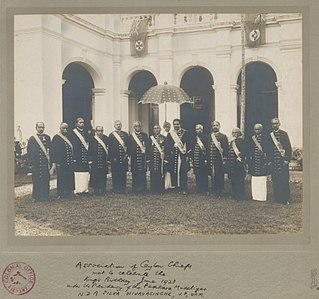
Mudaliyar was a Ceylonese colonial title during Portuguese and British rule of the island. Stemming from the native headman system, the title was usually hereditary, made to wealthy influential families loyal to the British Crown.
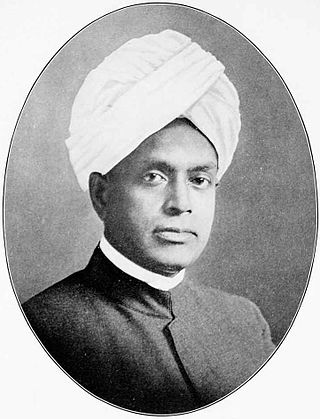
Sir Ponnambalam Ramanathan, was a Ceylon lawyer and politician who served as Solicitor-General of Ceylon.

Ponnambalam Arunachalam was a Ceylonese civil servant and a member of the Executive Council of Ceylon and Legislative Council of Ceylon.

Sir Don Baron Jayatilaka, KBE known as D.B. Jayatilaka was a Sri Lankan Sinhalese educationalist, statesmen and diplomat. He was Vice-President of the Legislative Council of Ceylon; the Minister for Home Affairs and Leader of the House of the State Council of Ceylon; and Representative of Government of Ceylon in New Delhi. Sir D. B. Jayatilaka is also considered as a flag bearer of Buddhist education in Sri Lanka.
Kandarodai is a small hamlet and archaeological site of Chunnakam town, a suburb in Jaffna District, Sri Lanka. The notable ancient Buddhist monastery referred to as Kadurugoda Vihara is situated in Kandarodai.
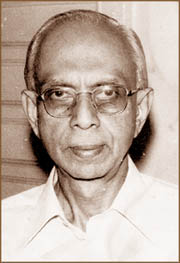
Professor Thambiah Nadaraja was a Sri Lankan academic, lawyer and author. He was dean of the Faculty of Law at the University of Ceylon and chancellor of the University of Jaffna.
Arumugampillai Coomaraswamy was a Ceylon Tamil member of the Legislative Council of Ceylon.
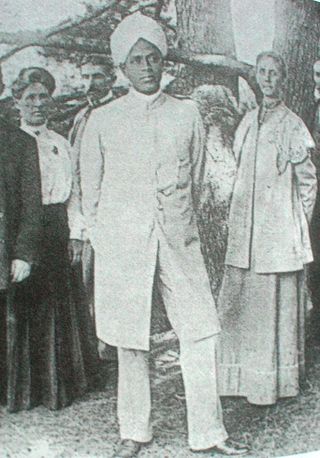
The Ponnambalam–Coomaraswamy family is a Sri Lankan Tamil Hindu family that was prominent in politics in former British Ceylon and later Sri Lanka from the colonial era to 1972. Many members received imperial honours such as knighthood by the British Crown.
Jettha Tissa II also known as Detutis II, was King of Anuradhapura in the 4th century, whose reign lasted 9 years from 332 to 341. He succeeded his brother Sirimeghavanna as King of Anuradhapura and was succeeded by his son Buddhadasa.
Colonel Amelius Beauclerk Fyers was the eighth Surveyor General of Ceylon. He was appointed in 1866, succeeding Charles Sims, and held the office until 1883. He was succeeded by P. C. H. Clarke.
The Ceylon National Congress (CNC) was a political party in colonial-era Ceylon founded on 11 December 1919. It was founded during a period where nationalism and support for the Sri Lankan independence movement grew quite intensely amidst British colonial rule in Ceylon. It was formed by members of the Ceylon National Association and the Ceylon Reform League.

Ponnambalam Coomaraswamy was a Ceylon Tamil lawyer and member of the Legislative Council of Ceylon.

Gate Mudaliyar Arunachalam Ponnambalam, JP, UM was a Ceylonese colonial-era government functionary, businessman and philanthropist. He was the cashier at the Colombo Kachcheri and was appointed to the titular rank of Gate Mudaliyar.
Sir Paul Edward Pieris Deraniyagala Samarasinha Sriwardhana, was a Ceylonese civil servant and historian. He served as Ceylon's Trade Commissioner and a District Judge and held multiple appointments as president of the Royal Asiatic Society of Sri Lanka. Although his academic and early career was in the legal field, he is best known for being one of the country's foremost experts on the history of European occupation of Sri Lanka.
Manikku Badaturuge Ariyapala was a Sri Lankan academic and former President of the Colombo Campus, University of Colombo.

Pekada, or pekadaya, are the decorative wooden pillar heads/brackets at the top of a stone or wooden column, known as kapa, supporting a beam or dandu. It is a unique feature of Kandyan architecture.










